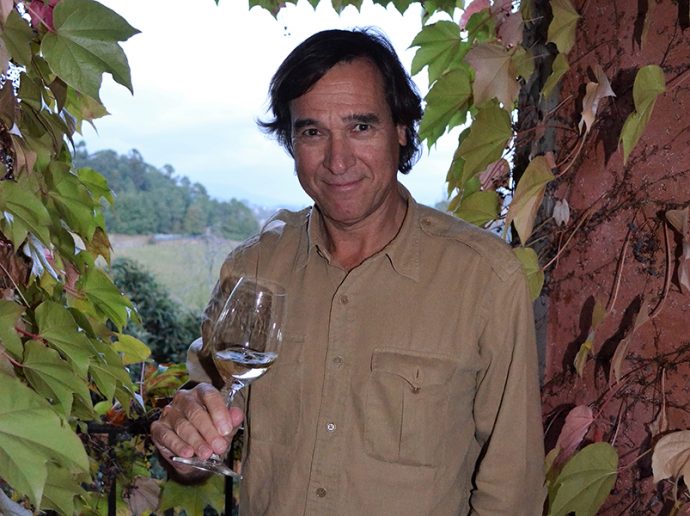This column is usually about wine and spirits.
I often focus on a producer, a region or maybe a type of grape or spirit. Today, however, let’s take a trip together to an exotic land and talk of castles, ancient monasteries, mountains, cathedrals, food, history — and wine. I recently returned from a wonderful and eye-opening trip to the west coast of the Iberian Peninsula, first exploring the Galicia region in the northwest corner of Spain. We then crossed the Miño River, separating Spain and northern Portugal, and experienced the flavors of Portugal — north, central and south. Put this destination at the top of your short list for your next vacation, whether it be family-style or romantic, and immerse yourself in an experiential taste of history and culture — and wine. It’s more affordable than you think.
Virtually anywhere you look is gorgeous countryside or bustling and historical city centers with the ocean never being far away. Galicia has five different Denomination of Origins (DOs) for its wine production. Rias Baixas is a region known for lovely white wines made from 100 percent Albariño grapes. This wine pairs perfectly with virtually any seafood dish. There are three different UNESCO World Heritage sites in the region, all well worth a visit, including the Tower of Hercules in Coruña. It is the only fully preserved Roman navigational lighthouse. Built in the first century, it is still in use today.
Santiago de Compostela, the capital of Galicia and another UNESCO site, is said to be the burial site of St. James the Greater, a disciple of Jesus. A Romanesque cathedral to the martyr is now the culmination of pilgrimage trails originating in France, Germany, Spain and Portugal. The faithful believe a pilgrimage to the shrine is a path to Heaven’s gates. To explore the idea of the spiritual quest, we spent a night in Parador de Santo Estevo, a former monastery dating from the sixth and seventh centuries and now a luxury hotel in Ourense, Spain.
As we moved southward, we entered the Ribeira Sacra DO and found white and red wine production. There we visited the winery Abadía da Cova, with reds made predominantly from Mencia and Garnacha grapes. The setting is among the most stunningly beautiful I have seen anywhere. The terrain is wild, looking out over a horseshoe-shaped river bend 1,000 feet below, with such steep topography that every row of vines needs its own retaining wall. The stonework alone must have taken decades of harvest just to cover the cost, and I can only imagine how impossible harvest time is every year. But Abadía makes beautifully structured, elegant wines worth seeking.
A bit further south overlooking the Miño River, we tasted through the wines of Viña Costeira, a major producer and wine cooperative spanning two Dos — the Ribeiro and the Valdeorras. This modern, high-tech winery has hundreds of partners and hundreds of growers. The wines are well-made, worthy and easily affordable.
Then we crossed the river into the Viño Verde region of northern Portugal. All of the Viño Verde wines we tried were lovely expressions of the local grapes. As I’ve written before in this column, the spritzy Viño Verdes of the past are being replaced with delicious, elegant wines capable of aging. Portugal has recently established a wonderful lodging environment that will amaze anyone. The Solares de Portugal is a collection of more than 100 historical estates, country homes and farmhouses throughout the country, many dating back hundreds of years, with rooms for rent that have been inspected and certified as architecturally, historically and luxuriously interesting. Instead of staying in a hotel, you stay in a living, breathing environment. One owner told us, “You come as a guest, you leave as a friend.”
We dined with a count and his wife at Paco de Calheiros, tasted their wines, toured their manor and learned about the evolution of the area through the generations. We visited Quinta do Ameal, a hidden gem of a wine-producing property owned by Pedro Araujo. The five meticulous, tastefully appointed guestrooms opened onto the country estate, where river sports, hiking and biking are regular pursuits. And, of course, the sound, organic Ameal wines are on the table. As Pedro told me, “Wine must represent a sense of place. We make our wines in the vineyard and not in the cellar. By focusing on the development of the fruit, making the wine is simple.” These white wines are natural and delicious, showing balanced citrus pucker with a full mouthfeel. Casa de Sezim, another Solares property, dates from 1376 and is home to papered medieval rooms that have become part of a pilgrimage for historical-wallpaper enthusiasts.
At any of these, the owners live onsite, so dining is high quality and likely to be served family-style. Instead of learning from the hotel bartender, you are likely to get an in-depth lesson of the region from the proprietor and taste the wines from the estate. Portugal is home to 115 UNESCO sites, scattered all over the country. And the best part — affordability. Rooms are available for somewhere between $125 and $170 per night. Add accessibility. To drive from the top of Spain to the southern edge of Portugal takes about eight hours. Any visit to the western coast of the Iberian Peninsula is a taste and experience of centuries of history. Find out what life was like with all the luxurious perks of what life can be.
Write me at doug@dougpaulding.com.


